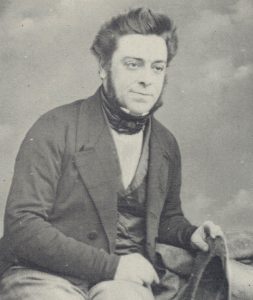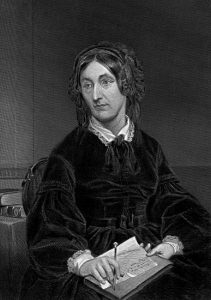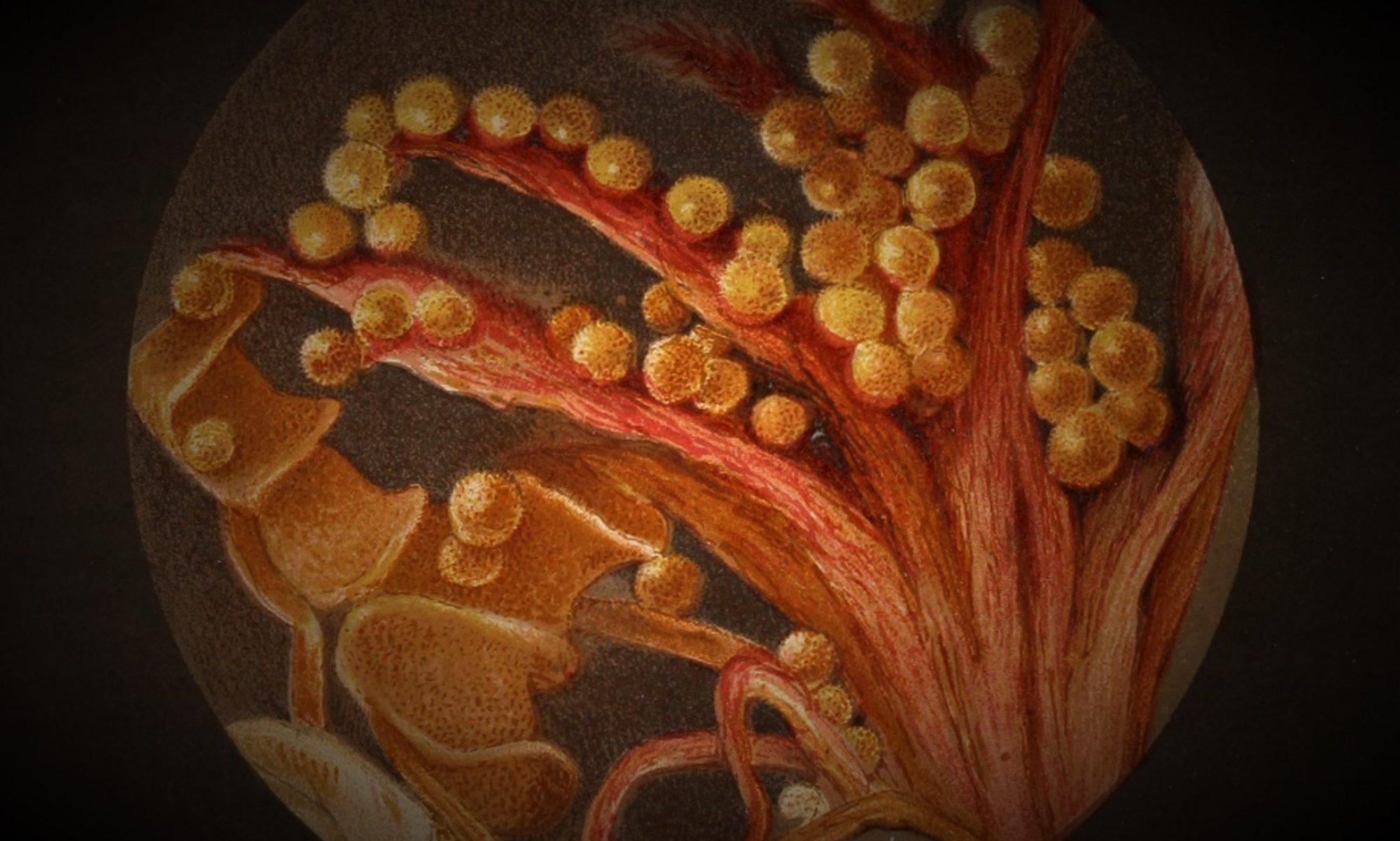Philip Henry Gosse: Evenings at the Microscope (1859)

Philip Henry Gosse (1810-1888) was an English zoologist and a prolific author of popular science books. In the early 1850s, Gosse set out to write a book on rotifers, microscopic animals that he collected in ponds and puddles. However, “it proved difficult to popularize so abstruse a subject [as rotifers]” and Gosse abandoned the project. 1 He went on to publish Evenings at the Microscope in 1859, which contains a chapter on rotifers, or “wheel-bearers.” His book was widely read and made rotifer research more popular. In 1897, the illustrations Gosse made for Evenings at the Microscope were reprinted in an American children’s book, Clara Kern Bayliss’ In Brook and Bayou.
Mary Somerville: On Molecular and Microscopic Science (1869)

Mary Somerville (1780-1872) was a renowned Scottish astronomer and mathematician, and a celebrated science author. Her On Molecular and Microscopic Science, however, was not as well-received as her books on astronomy and physics. The Popular Science Review called it “a mistake,” its arguments being “crude” and “undigested.” Still, the reviewer admitted that the book’s illustrations were of “great beauty, attractiveness, and effect.” 2 Mary Somerville borrowed heavily from other microscopy handbooks, which makes her On Molecular and Microscopic Science an interesting case of texts and images moving among publications, and possibly being adapted to different audiences.
Thomas Bolton: Hints on the Preparation of Living Objects and Their Examination Under the Microscope (1879-1882)
Thomas Bolton (ca. 1830-1887) was a Birmingham microscopist, who sent living microscopic specimens to microscopists all over Europe. His specimens were accompanied by “flyleaves,” brief descriptions and illustrations of the specimens, often copied from microscopy journals and handbooks. Bolton’s flyleaves were bound and published at intervals. We uploaded a collection of flyleaves circulated between 1879 and 1882. After Bolton died in 1887, his son seems to have taken over his business and continued to send specimens to Europe and North America: There is an advert for “Thomas E. Bolton’s Living Microscopic Specimens” in the American Monthly Microscopical Journal (1898).
The American Monthly Microscopical Journal (1880-1902)
The American Monthly Microscopical Journal was founded by Romyn Hitchcock (1851-1923), a many-sided author, scientist, museum curator and photographer. Originally, the American Monthly Microscopical Journal was associated with the New York Microscopical Society, but in 1887 it was moved to Washington. It contained reports on the meetings of many American microscopy societies, correspondence of its subscribers, descriptions of microscopes and manuals on how to prepare and observe microscopic specimens.
Quarterly Journal of Microscopical Science (1853-1966)
When the Quarterly Journal of Microscopical Science was founded in 1853, it contained the transactions of the Microscopical Society of London and combined them with reports on microscopy in Britain and abroad. However, many members of the London society felt that they should have their own journal and when the society obtained its royal charter in 1866, the quarterly was dissociated from the new Royal Microscopical Society (RMS). The journal continued to be widely read and its successor, the Journal of Cell Science, still exists today.

